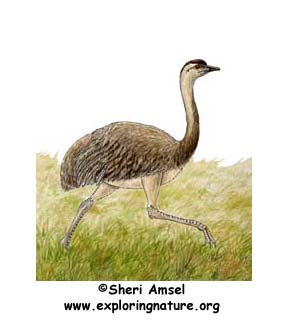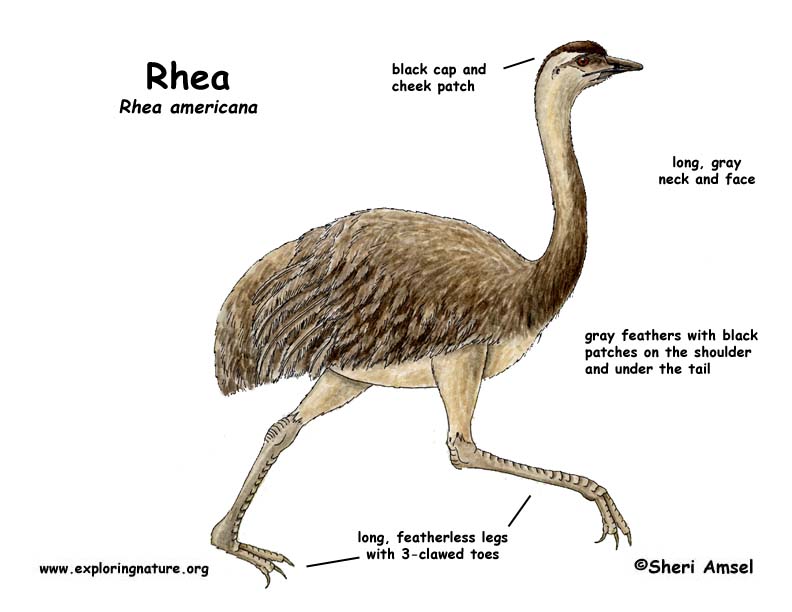

There are 2 species of rhea; Darwin's rhea and American rhea. Both are found in South America.
They live on the grasslands (pampas) and open brushy areas.
They are 4-6 feet tall with a gray neck and face with a black cap on the top of their head and cheek. Their body color is usually gray, with black feathers on the shoulder area and under tail on the male. The female is only gray. They have long, naked legs with three clawed toes.
The rhea are fast runners and escape predators by being able to change direction quickly while running. They also "hide" by lying flat on the ground. In defense, they can strike a strong blow with their feet. Both their sight and hearing are excellent. They flock into groups of up to 30 birds and will also flock with herds of cattle.
They eat seeds, roots, grasses, leaves, insects, worms, and lizards.
Males gather a group of 6 - 8 females (harem). They nest in a dent on the ground, where each female lays up to 20 yellow eggs. The males then warm (incubates) them for more than a month.
Kingdom: Animalia
Phylum: Chordata
Subphylum: Vertebrata
Class: Aves
Order: Struthioniformes
Family: Rheidae
Genus: Rhea
Species: R. americana
When you research information you must cite the reference. Citing for websites is different from citing from books, magazines and periodicals. The style of citing shown here is from the MLA Style Citations (Modern Language Association).
When citing a WEBSITE the general format is as follows.
Author Last Name, First Name(s). "Title: Subtitle of Part of Web Page, if appropriate." Title: Subtitle: Section of Page if appropriate. Sponsoring/Publishing Agency, If Given. Additional significant descriptive information. Date of Electronic Publication or other Date, such as Last Updated. Day Month Year of access < URL >.
Amsel, Sheri. "Rhea" Exploring Nature Educational Resource ©2005-2024. December 14, 2024
< http://www.exploringnature.org/db/view/136 >

